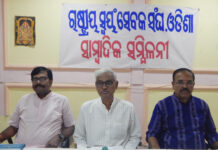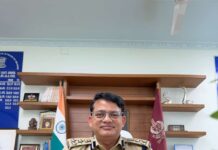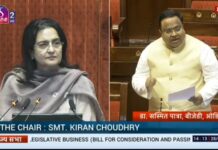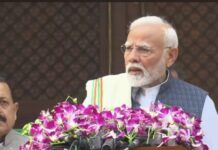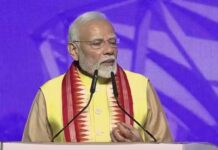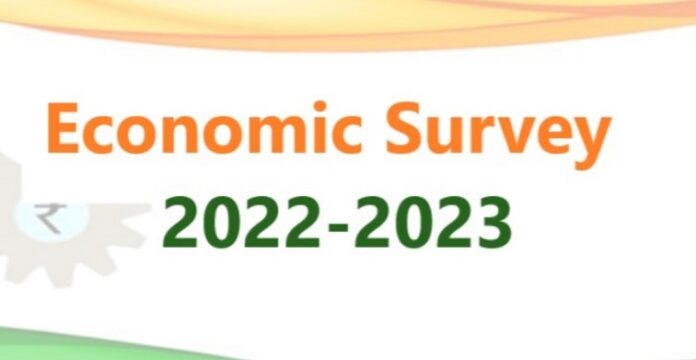By Our Correspondent
NEW DELHI/BHUBANESWAR: The Economic Survey 2022-23, tabled by the Minister of Finance and Corporate Affairs, Smt Nirmala Sitharaman, in Parliament today states that as the world recovers from the effects of a global pandemic, and an ongoing war, India prepares to enter it’s Amrit Kaal. This era promises to be one where economic growth is supported by social welfare, where India today is committed to leave no one behind, and ensure that the impact and benefits of its growth and progress reach all in its diverse and expansive populace transcending innumerable cultures, languages, and geographies, constituting the real wealth of the country.
The Economic Survey further states that the focus on social welfare is all the more pertinent in the contemporary scenario as India has adopted the UN SDGs 2030, which are a set of comprehensive, far-reaching, and people-centric universal and transformative goals and targets. Many of these 17 goals concern the social well-being of individuals, resolving as follows: “We resolve, between now and 2030, to end poverty and hunger everywhere; to combat inequalities within and among countries; to build peaceful, just, and inclusive societies; to protect human rights and promote gender equality and the empowerment of women and girls; and to ensure the lasting protection of the planet and its natural resources. We resolve also to create conditions for sustainable, inclusive and sustained economic growth, shared prosperity and decent work for all, taking into account different levels of national development and capacities.”
SOCIAL SECTOR EXPENDITURE
The Government’s spending on social services has shown a rising trend since FY16 with a focus on many aspects of the social well-being of citizens of the country. The share of expenditure on social services in the total expenditure of the Government has been around 25 per cent from FY18 to FY20. It increased to 26.6 per cent in FY23 (BE). According to the Economic Survey, the social services expenditure witnessed an increase of 8.4% per cent in FY21 over FY20 and another 31.4 per cent increase in FY22 over FY21, being the pandemic years, which required enhanced outlay, especially in the health and education sectors. While the social sector expenditure outlay of the Centre and State governments was 9.15 lakh crore in 2015-16, it has increased steadily to stand at 21.3 lakh crore in FY23 (BE).
As per Economic Survey, the share of expenditure on health in the total expenditure on social services, has increased from 21 per cent in FY19 to 26 per cent in FY23 (BE). The Fifteenth Finance Commission, in its report, had recommended that public health expenditure of Union and States together should be increased in a progressive manner to reach 2.5 per cent of GDP by 2025 (FFC report, para 9.41, iii). In keeping with this objective, Central and State Governments’ budgeted expenditure on the health sector reached 2.1 per cent of GDP in FY23 (BE) and 2.2 per cent in FY22 (RE), against 1.6 per cent in FY21.
POVERTY
Poverty is primarily measured in terms of lack of monetary means for a decent living. However, by definition ‘poverty’ has wider implications and leads to multiple disadvantages at the same time – such as poor health or malnutrition, lack of sanitation, clean drinking water or electricity, poor quality of education etc. Multidimensional poverty measures are hence used to create a more comprehensive picture.
The 2022 report of the UNDP on MPI was released in October 2022 and covers 111 developing countries. As regards India, the survey data for 2019-21 has been used. Based on these estimates, 16.4 per cent of the population in India (228.9 million people in 2020) is multidimensionally poor while an additional 18.7 per cent is classified as vulnerable to multidimensional poverty (260.9 million people in 2020).
The findings of the report suggest that in India, 41.5 crore people exited poverty between 2005-06 and 2019-21. It clearly demonstrates that the SDG target 1.2 of reducing at least by half the proportion of men, women, and children of all ages living in poverty in all its dimensions according to national definitions by 2030 is possible to achieve.
AADHAAR for delivery of Social Services:
Aadhaar is an essential tool for social delivery by the State. 318 Central schemes and over 720 state DBT schemes are notified under section 7 of the Aadhaar Act, 2016, and various initiatives like Direct Benefit Transfer, Aadhaar Enabled Payment systems, JAM (Jan-Dhan, Aadhaar, and Mobile) trinity, One Nation One Ration Card, CoWin use Aadhaar for targeted delivery of financial services, subsidies, and benefits.
As per Economic Survey, 135.2 Crore Aadhaar enrollments have been generated, 75.3 crore residents have linked their Aadhaar with ration cards to avail of Ration. It is further stated that 27.9 crore residents linked Aadhaar with cooking gas connection for LPG Subsidy and 75.4 crore bank accounts are linked with Aadhaar, and more than 1500 crore transactions have taken place via Aadhaar Enabled Payment Systems (AePS).
With the overall development of the economy, the concept of quality of life has enlarged to include many more elements than the traditional metrics of income (which determine the availability of basic requirements such as food and shelter) and education levels. It now encompasses access to clean drinking water, sanitation, employment prospects, health care, social security, connectivity, etc. All these together determine the quality of life. Hence the focus on social life aims to achieve the vision of “Sabka Sath, Sabka Vikas and Sabka Vishwas”.


